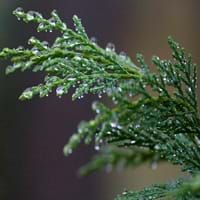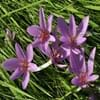Life Span
Perennial
Perennial
Type
Bulb or Corm or Tuber
Needled or Scaled Evergreen
Origin
Hybrid origin
Hybrid origin
Types
boissieri , cupanii , hungaricum , kesselringii
not available
Number of Varieties
Not Available
Habitat
Temperate Regions
All sorts of environments, Alpine Meadows, High elevation, Hilly upland habitat
USDA Hardiness Zone
Not Available
6-9
AHS Heat Zone
Not Available
9-3
Sunset Zone
21,22
3b, 4, 5, 6, 7, 8, 9, 10, 11, 12, 13, 14, 15, 16, 17, 18, 19, 20, 21, 22, 23, 24
Habit
Clump-Forming
Pyramidal
Flower Color
Purple, Violet
Non Flowering Plant
Flower Color Modifier
Bicolor
Bicolor
Fruit Color
Not Available
Brown
Leaf Color in Spring
Green
Green, Blue Green, Gray Green
Leaf Color in Summer
Light Green
Green, Blue Green, Gray Green
Leaf Color in Fall
Several shades of Green
Green, Blue Green, Gray Green
Leaf Color in Winter
Light Green
Green, Blue Green, Gray Green
Leaf Shape
Long Linear
needle shaped
Plant Season
Spring, Fall
Spring, Summer, Fall, Winter
Sunlight
Full Sun, Partial Sun
Full Sun
Type of Soil
Loam
Clay, Loam
The pH of Soil
Acidic, Neutral
Acidic, Neutral, Alkaline
Soil Drainage
Well drained
Well drained
Bloom Time
Late Summer, Early Fall
All year
Tolerances
Drought
Cold climate, Deer resistant
Where to Plant?
Ground
Ground
How to Plant?
Divison, From bulbs, Seedlings
Hardwood Cuttings, Transplanting
Plant Maintenance
Medium
Medium
Watering Requirements
Keep ground moist
Average Water Needs
In Summer
Lots of watering
Lots of watering
In Spring
Moderate
Moderate
In Winter
Average Water
Average Water
Soil pH
Acidic, Neutral
Acidic, Neutral, Alkaline
Soil Type
Loam
Clay, Loam
Soil Drainage Capacity
Well drained
Well drained
Sun Exposure
Full Sun, Partial Sun
Full Sun
Pruning
no pruning required
Prune for size control, Prune if you want to improve plant shape, pruning needed for strong structure, Remove damaged leaves, Remove dead branches, Remove dead leaves
Fertilizers
All-Purpose Liquid Fertilizer
All-Purpose Liquid Fertilizer, slow-release fertilizers
Pests and Diseases
Dry root rot, Pest Free
Canker, Root rot, Stigmina needle blight
Plant Tolerance
Drought
Cold climate, Deer resistant
Flower Petal Number
Single
Single
Foliage Texture
Coarse
Fine
Foliage Sheen
Glossy
Matte
Attracts
Whiteflies
Birds
Allergy
Poisonous to grazing animals
Unknown
Aesthetic Uses
along a porch, deck or patio, Borders, Mixed Border, small hedge
Formal Garden, Ornamental use, Showy Purposes, Woodland margins
Beauty Benefits
No Beauty Benefits
Not Available
Environmental Uses
Air purification
Air purification
Medicinal Uses
anti rheumatic, cathartic
No Medicinal Use
Part of Plant Used
Root
Not Available
Other Uses
Showy Purposes
Acts as a natural source of rain water for birds and insects., deer resistant, Used as Christmas Tree
Used As Indoor Plant
No
No
Used As Outdoor Plant
Yes
Yes
Garden Design
Container, Cutflower, Foundation, Lawns and Turf, Mixed Border
Feature Plant, Hedges, Mixed Border, Screening, Wind Break
Botanical Name
COLCHICUM 'Lilac Wonder'
X CUPRESSOCYPARIS leylandii
Common Name
Hybrid Autumn Crocus, Hybrid Meadow Saffron
Leylandii
In Hindi
meadow saffron
Leyland cypress
In German
Herbstzeitlose
Leyland-Zypresse
In French
Colchique d'automne
Cyprès de Leyland
In Spanish
Estado de conservación
Cupressus leylandii
In Greek
meadow saffron
Leyland Cypress
In Portuguese
Colchicum autumnale
Cipreste-de-leyland
In Polish
Colchicum autumnale
Cyprysowiec Leylanda
In Latin
autumnale
Leyland Cypress
Phylum
Tracheophyta
Coniferophyta
Class
Magnoliopsida
Pinopsida
Family
Liliaceae
Cupressaceae
Genus
Colchicum
Cupressus
Clade
Angiosperms, Monocots
Not Available
Tribe
Not Available
Not Available
Subfamily
Not Available
Not Available
Number of Species
Not Available
Not Available
Season and Care of Meadow Saffron and Leyland Cypress
Season and care of Meadow Saffron and Leyland Cypress is important to know. While considering everything about Meadow Saffron and Leyland Cypress Care, growing season is an essential factor. Meadow Saffron season is Spring and Fall and Leyland Cypress season is Spring and Fall. The type of soil for Meadow Saffron is Loam and for Leyland Cypress is Clay, Loam while the PH of soil for Meadow Saffron is Acidic, Neutral and for Leyland Cypress is Acidic, Neutral, Alkaline.
Meadow Saffron and Leyland Cypress Physical Information
Meadow Saffron and Leyland Cypress physical information is very important for comparison. Meadow Saffron height is 12.70 cm and width 20.30 cm whereas Leyland Cypress height is 1,830.00 cm and width 240.00 cm. The color specification of Meadow Saffron and Leyland Cypress are as follows:
Meadow Saffron flower color: Purple and Violet
Meadow Saffron leaf color: Green
Leyland Cypress flower color: Non Flowering Plant
- Leyland Cypress leaf color: Green, Blue Green and Gray Green
Care of Meadow Saffron and Leyland Cypress
Care of Meadow Saffron and Leyland Cypress include pruning, fertilizers, watering etc. Meadow Saffron pruning is done no pruning required and Leyland Cypress pruning is done Prune for size control, Prune if you want to improve plant shape, pruning needed for strong structure, Remove damaged leaves, Remove dead branches and Remove dead leaves. In summer Meadow Saffron needs Lots of watering and in winter, it needs Average Water. Whereas, in summer Leyland Cypress needs Lots of watering and in winter, it needs Average Water.





